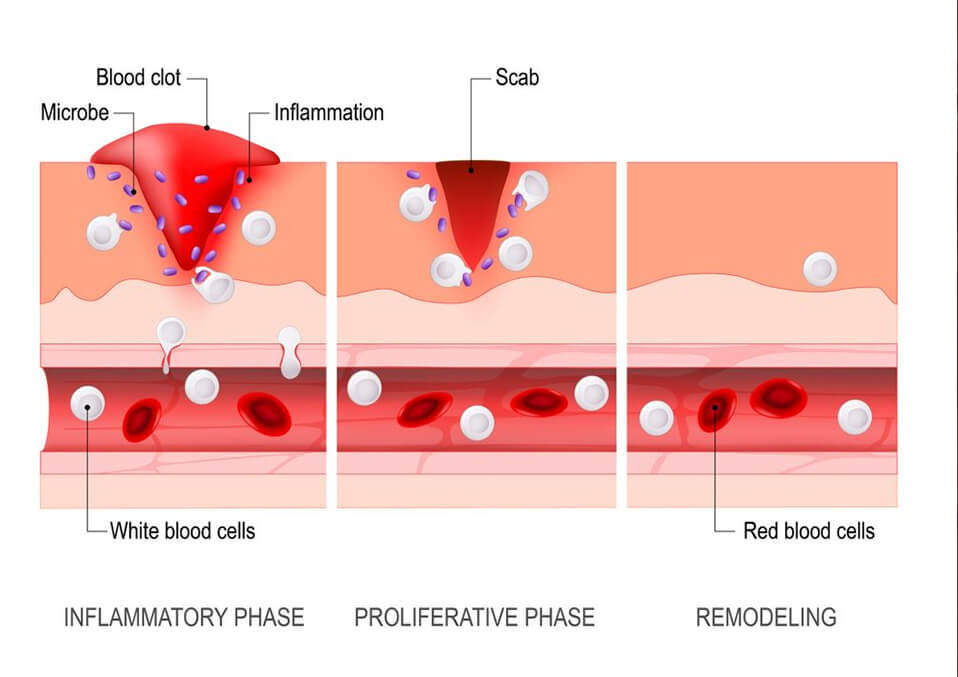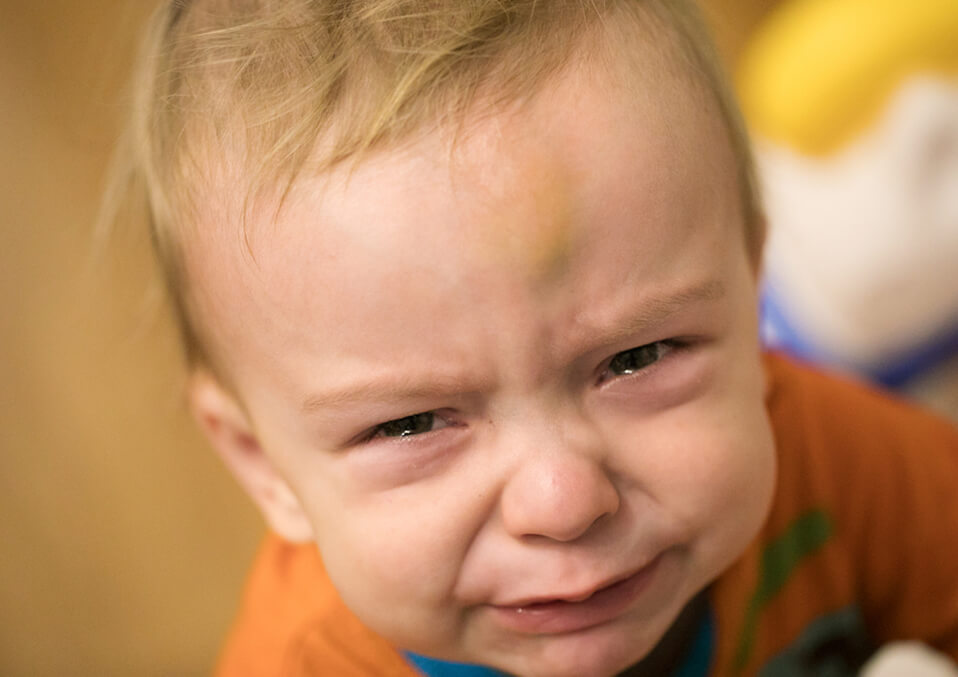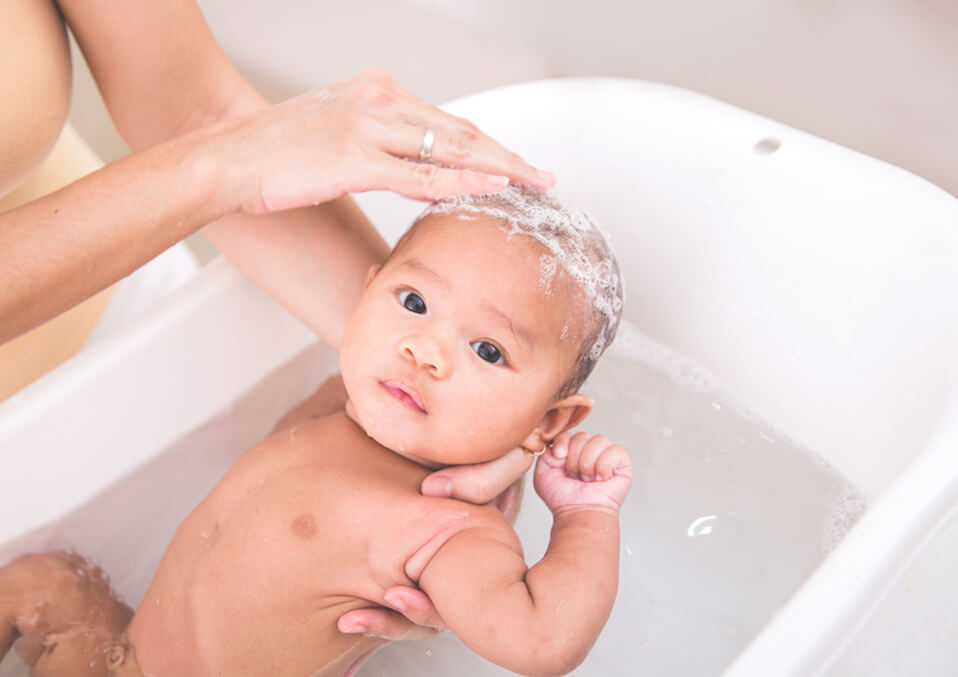
What are bruises?

Bruises or medically named as Ecchymosis a medical condition wherein there is a trauma of any kind under the skin, usually blood clotting or bleeding that creates a black and blue discoloration in the baby’s skin.
Bruises can occur in a baby if there is a mishandling that happened, whether it is an accident that induced injury to a certain part of the baby, it must be taken seriously considering that babies have a very vulnerable and delicate skin with soft tissues and carriage, any king of bruising can cause pain to the baby which could result in a baby frequently crying.
In addition to this, it is also very uncomfortable to see your baby’s bruises, you can’t imagine feeling that kind of pain, now let’s take a deep look on the bruises of your baby, how and why it happens and some known treatments to accelerate the wound healing of the baby’s bruises.
Why do bruises happen? how do bruises happen?

Bruises can happen if your baby is playing and knocks him or herself creating an injury in the specific part, it could also happen if you or any babysitter has mishandled the baby causing in any physical trauma that could lead to bruising.
Some bruises can also vary differently, fair-skinned children and babies have more prominent bruise marks that can be alarming, there are also babies with complications that resulted in heavy bruise marks, that’s why it is important to consult the doctor to ensure the safety of the baby.
A contusion or bruise usually happens when the soft tissues of the baby’s skin gets bumped or injured that causes severe damage to the skin, this causes the tiniest veins and capillaries to get broken, the blood leaks out of the blood vessels and forms a clot that accumulates under the skin which causes reddish to purplish skin.
Read also: Baby’s breathing problems that you should be watchful about
The bruises can go through color changes as it begins to fade away, it is a sign that the baby’s body is healing itself, this is due to the body’s homeostasis and metabolic system working through, what it specifically does is that during the metabolization process it starts to break down the blood cells under the skin, this means that the purplish to bluish undertone begins to fade away over time.
It is also important to note that there are phases of bruise healing that one should notice to make sure your baby is safe and healthy.
The bump on your baby’s skin will usually be accompanied by your baby’s cry for help, it might be really painful for them so it is necessary to calm them down.
The bump then begins to swell due to the red blood cells accumulating under the skin. After three to four days, the blood clot under the skin will look bluish to blackish, after six to eleven days the bruises from bluish-black will change color to greenish-yellow, after 2 weeks or so the bruise will begin to fade away usually the bruise will be of lighter color depending on your child’s skin tone.
Bruises are common among babies and children so it is important to remember it is part of their integral milestone of exploring themselves and their body, let them walk and play but be sure to guide them in order to ensure and prevent any kind of bruising.
How to accelerate the healing Of the bruises

Contusions or bruises usually heal on its own, it will most likely fade away and disappear after two to three weeks, some mild bruising will usually fade a lot sooner and severe bruising usually lasts more than two weeks and this could be a problem.
There are some proven ways to help alleviate the pain and the discoloration of the bruises and help it accelerate its healing process, one of the ways are as follows:
Read also: Your babys earwax buildup what can you do about it
- Apply a cold compress or ice to the bruise for twenty minutes. This will alleviate the pain and soreness of the affected area, it also decreases the amount of blood flow in the injured area which lessens the coloration.
- Let your baby have a warm bath, make sure the water in the tub is lukewarm, this helps in calming down the baby’s system and alleviates the pain and soreness of the bruise.
- Always let your baby drink water and his or her formula milk or breast milk to ensure he or she is getting enough nutrients that are essential for the healing process of the bruises.
- Let your baby take small amounts of Vitamin K supplement or let them have Vitamin K rich foods that further enhance the healing process of the broken vessels and capillaries, Vitamin K is known for its antioxidant properties and blood clotting abilities, if you think that the supplement your baby is getting is not enough, you can always try baby multivitamins that have essential micrograms of Vitamin K.
- During the week of the healing process, advise your baby to avoid moving and playing vigorous activities that may cause further bruising and to avoid any unnecessary complications.
- When playing let your child has protective gears, especially around his knees and arms, also make sure to let them wear a helmet, that is because many kinds of accidents that result in bruise marks are common around the knees and arms, also be sure to let them wear any kind of protective lenses or sunscreen when the sun is out, especially if the place you live in has a UV Index of 7-12.
Final notes
A child’s bruise is painful and uncomfortable, however, it is necessary for them to experience it in their life, it has always been part of a baby’s milestone to walk and stumble, but they will learn.
Read also: Lip tied babies and what you should do
Always remember that nursing is completely normal and poses no risk or complications to your baby, although you should always keep in mind the severity of the bruise, if you feel and see that your baby’s bruise is not healing or the bruise is huge and hinders the baby’s day to day activities, it is vital for you to let your doctor check your baby.
Read also:
- When Do Babies Skin Color Change
- Baby Not Growing in the Womb How To Deal With It
- Babies Emergency: Everything You Need To Know For Your Child Safety


